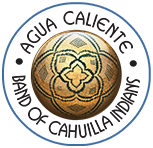
Hidden beneath the vast desert expanses of the Coachella Valley lies a natural treasure most would hardly expect: a colossal reservoir of pure, drinkable water. Stretching 65 miles from the Whitewater River to the Salton Sea, this incredible underground aquifer contains a storage size equal to more than 30 million football fields. Though unknown to many, these waters have long served as the desert's main water source. In fact, the native people of this region have had a relationship with the aquifer-which provided water for drinking, farming, irrigation, and ceremonies-that dates back several centuries.
Traditionally, the relationship with the aquifer was a harmonious one, as the water was naturally replaced with rainfall and snowmelt as it was used. Purity was never a question; the aquifer's natural filtration system of sand and gravel distilled the water after it trickled down the Andreas Canyon and seeped back into the reservoir. Despite its incredible size, though, the aquifer's water supply is not unlimited, nor is it able to renew itself without the proper conditions. Without responsible care, the Coachella Valley's aquifer can become polluted, depleted, or otherwise unusable as the desert's main source of water.
It's no secret that water is an exceptionally precious natural resource in California. The desert communities of the valley are far from immune to the groundwater crisis gripping the state.
A 2013 investigative report by The Desert Sun found that the aquifer's levels have dropped by an average of 55 feet since 1970. Such levels of overpumping are not without serious and costly consequences. According to a 2014 report by the California Water Foundation, overpumping is creating two problems. The first is ground subsidence, in which the land above the aquifer begins to sink. Once an aquifer collapses due to subsidence, it loses its capability to store. The second problem is increased energy bills to cover the cost of pumping water from greater depths.
These are just two of the potential problems that can arise from overpumping. Unfortunately, overpumping is not the only threat to the sustainability of the aquifer. As the water level in the aquifer drops, local agencies replenish the aquifer with water from the Colorado River; this puts the aquifer's natural purity level at risk as well. That's because Colorado River water contains chemicals, pesticides, pharmaceutical residue, and other impurities that further jeopardize the quality of the aquifer's water.
Stewardship of the desert's natural resources is one of the highest priorities of the Agua Caliente Band of Cahuilla Indians. In order to protect both the aquifer's quality and quantity for the community and future generations, action must be taken now.
The Tribe has been an advocate of the aquifer for decades, urging local agencies to prioritize water quality and reduce over-drafting. To ensure this natural resource is protected for generations to come, the Tribe has pursued legal action to have its water rights recognized. By securing legal recognition of the Tribe's water rights, the Agua Caliente Band of Cahuilla Indians hopes to be able to work in collaboration with local agencies to protect this precious water source.
From golf courses and swimming pools to agriculture and landscaping, the water demands of our desert communities will continue to draw from the Coachella Valley's aquifer. A sustainable and responsible approach is crucial to protect the aquifer, not only to meet today's water needs but to ensure that we leave clean, accessible water for our children, grandchildren, and all future generations.
Visit www.aguacaliente-nsn.gov for more information about clean water and the aquifer.
-by Marissa Willman




